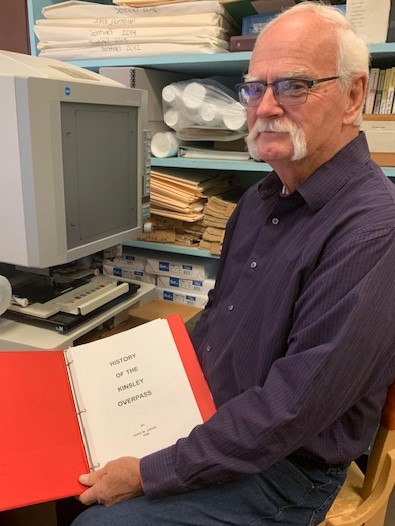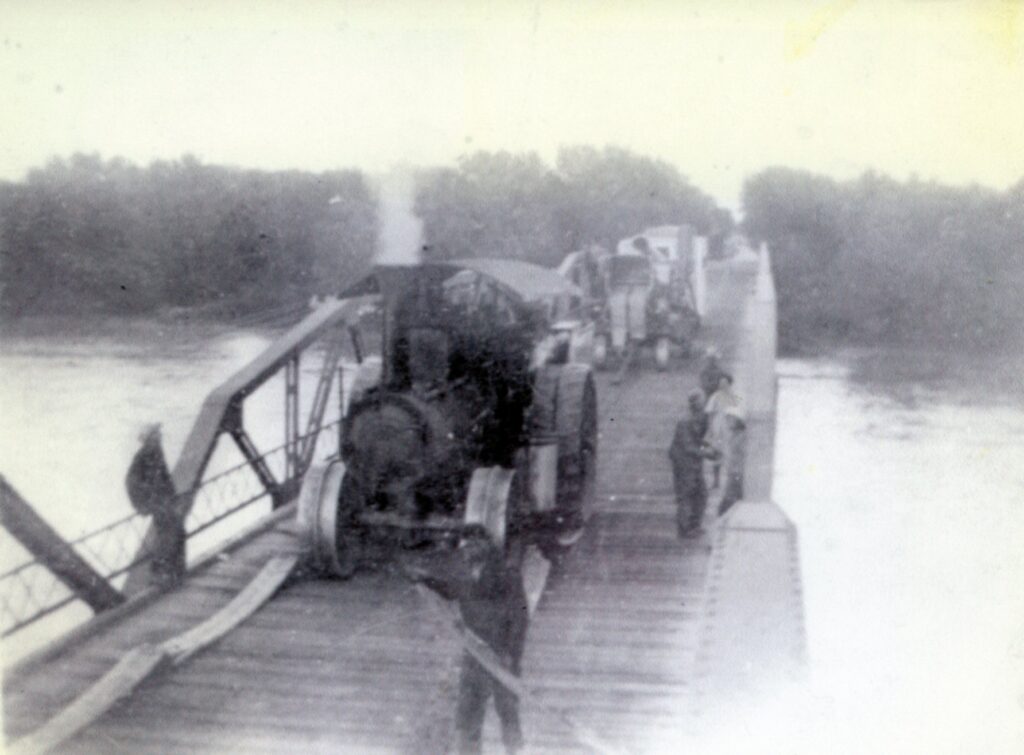Second, Eighth, Tenth? That was the question. As you read this article, and with the advantage of hindsight, do you think the right route for Highway 50S was selected?
Gary Jarvis’ comprehensive research notebook on road and overpass construction between 1933-1938 again forms the basis for my article this week. Over the years, Gary worked for the state and county highway departments. In 1998 he received an injury while working for the state that required neck surgery. During the months of recovery, he filled his time with his passion for history. He spent countless hours at the library reading the Kinsley Mercury on microfilm and then transcribing the articles. What a valuable historical record it is!

The 1930’s depression and drought brought widespread unemployment. Both the federal and state governments offered relief by hiring men to work on greatly needed infrastructure. Besides improving roads, highways, and bridges in Edwards County, an overpass over the Santa Fe Railroad was proposed.
By May, 1935, surveyors mapped re-routing Hwy 50S from 8th St. to 2nd St. The route would run from the hill east of town and come straight west across the Arkansas River where a new bridge would be required. It would be where L Rd is now, then swing south to Second St. and continue west on 2nd St. past the Fravel House (816 E. 2nd St., now owned by BroKars). The overpass would go over the tracks and meet Hwy 45 at the old swimming pool corner (by the E-Z Stop).
In November, 1935, a second surveying party came to Kinsley and proposed a different re-routing. This route would angle 50S southwest to hit 10th St. on the eastern edge of the city. Early 10th St. ended at Briggs Ave. The overpass would then go over the tracks just west of the city limits.

Change seems to always be met with opposition, and a proposed overpass was no exception. Some thought the highway should remain on 8th St. because there were two schools and three churches on it. Others thought that for those very same reasons it should be moved for safety considerations.
Most people were in favor of the overpass following the Second St. route. However, by January, it was clear that the federal highway department would only approve the 10th St. route.
The combination of a federal overpass and the rerouting of 50S to 10th St. would bring about $250,000 to town. The city would only be required to fund purchasing the rights of way along 10th St. That cost would be offset by providing paying jobs which would lessening the burden of relief checks.
As the debate carried on and no decision was made, there was a threat of losing the overpass project and maybe the intercontinental Hwy 50 altogether. If you remember from last week, there was a Highway 50N which could have become an alternative. Finally, the city commissioners voted on March 19th to go ahead with purchasing the rights of way for the 10th St. route.
As the city, feds, and state moved ahead on the letting of bids, some citizens mounted a successful petition to put the purchase of the 10th St. rights of way to a public vote. On May 29th, an election resulted in a vote of 585 to 129 in favor or purchasing the rights of way. Construction could begin. The rights of way would end up costing the city $10,350 which brought the quarter of a million-dollar project and much needed employment to the city and county.
To be continued next week with the building of the 1937 overpass.
